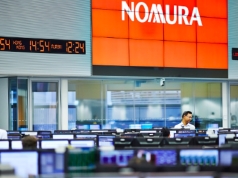BlackRock Private Markets Outlook 2024: $13 Trillion AUM with $3.9 Trillion Dry Powder, Top 5 Private Markets Asset Classes are Private Equity, Real Estate, Private Debt, Infrastructure & Natural Resources
9th February 2024 | Hong Kong
BlackRock has released the BlackRock Private Markets Outlook 2024, providing key insights into private markets investment in real estate, infrastructure, private debt & private equity. In 2023, the private markets total AUM (Assets under Management) is at $13 trillion with $3.9 trillion of dry powder (available capital for investment). The top 5 private markets asset classes are Private Equity, Real Estate, Private Debt, Infrastructure & Natural Resources. Real Estate Outlook – Window of opportunity opening up for real estate investors, Limited financing availability, Opportunity for non-bank lenders (insurance companies & debt funds), Less-liquid environment favours investors who rely on little or no leverage. Real Estate Outperformance 1) United States – Apartments in key suburban locations, Necessity retail close to metropolitan areas, Logistics hubs near major cities. 2) Europe – Industrial and logistics facilities that benefit from e-commerce and near-shoring, Residential and office-to-residential conversion, Life sciences facilities in university and knowledge centres, 3) Asia-Pacific – Last-mile logistics in supply-constrained locations, Living and hospitality sectors, Niche sectors, such as childcare facilities. Infrastructure Outlook – Offers cashflows that are less tied to economic cycles than other asset classes, long-term & inflation-linked contracts that can span decades, Forward-looking structural trends such as the transition to a low-carbon economy, World becomes more digital requiring physical infrastructure, fibre, wireless towers, storage infrastructure such as data centres. Private Debt Outlook – Private Debt with $1.6 trillion AUM representing 12% of alternative $13 trillion AUM. Middle-market firms are increasingly turning to the private debt markets as a viable path for funding, driven by a range of factors including tighter bank lending standards and structural shifts in the public markets to serve larger borrowers. More borrowers are running “dual track” processes, simultaneously assessing both the public and private markets for their needs. Private Equity Outlook – Rising rates, inflationary pressure, economic and geopolitical uncertainty and a correction in the broader public equity markets have driven slower deal activity. Less availability and higher cost of debt has forced private equity buyers to increase equity contributions to complete transactions. Economic headwinds and rising costs of capital have re-focused private equity buyers on industry-leading companies with strong cashflow and return on capital. Higher quality sectors like technology and healthcare that have proven more resilient are priorities for investment. The shortage of exit opportunities has left an estimated 75% of private portfolios net-cash-flow negative. As a result, limited partners are turning to the secondaries market for liquidity and to meet distribution requirements. In the secondaries market, we’re seeing a continued oversupply of opportunities driving further discounts. See below for key findings & summary | View report here
“ $13 Trillion AUM with $3.9 Trillion Dry Powder, Top 5 Private Markets Asset Classes are Private Equity, Real Estate, Private Debt, Infrastructure & Natural Resources “
Embracing a changing world – Despite the continuing uncertainty facing investors amid higher rates, inflation, and volatility, at BlackRock we are identifying and embracing the big, structural changes that are reshaping our world: the mega forces. We believe these mega forces – digital disruption and AI, the low-carbon transition, demographic divergence, the future of finance and geopolitical fragmentation – offer major investment opportunities. And we see private markets as uniquely positioned to benefit from the shifts that are already under way. Whether it’s infrastructure’s importance to the transition or the role of real estate in helping societies adapt to demographic change, private capital will be essential. In the following pages our investors outline the opportunities – and the risks – presented by the mega forces. They also give their insights on the past year in their asset classes and where they see markets heading in 2024. It’s important to note the variety of these asset classes. Private markets are sometimes viewed as a single investment option, but as this Outlook shows, they span different sectors, geographies, investment styles, and risk appetites. There is no one type of “private asset” and the key to a successful portfolio is recognizing the differences and choosing the right option for an investor’s needs.
Edwin Conway
Global Head of Equity Private Markets
BlackRock
BlackRock Private Markets Outlook 2024
BlackRock has released the BlackRock Private Markets Outlook 2024, providing key insights into private markets investment in real estate, infrastructure, private debt & private equity.
BlackRock Private Markets Outlook 2024
1) Private Markets Overview
Private Markets Top 5 Asset Classes:
- Private Equity
- Real Estate
- Private Debt
- Infrastructure
- Natural Resources
Private Markets Total AUM – $13 trillion
Private Markets Dry Powder (Available capital for investment) – $3.9 trillion
2) Real Estate Outlook
- Window of opportunity opening up for real estate investors.
- Valuations are still adjusting down from their 2022 peaks
- Dislocated environment allows investors to purchase high-quality assets at attractive prices, and often below replacement cost
- Bid-ask spreads are starting to narrow as investors command higher risk premiums across the board
- Transaction volume globally is down 57% yoy largely due to the higher cost of capital.
- In the near term, limited financing availability
- Banks continue to adapt to the changing regime, restrictive financing environment should continue.
- Creates opportunity for non-bank lenders, such as insurance companies and debt funds, to step in – varied capital availability by sector and market.
- Less-liquid environment favours investors who rely on little or no leverage.
United States Real Estate Past-Returns (After 2008 Global Financial Crisis):
- Peak to trough: -44%
- 1 Year: +19%
- 3 Year: +48%
- 5 Year: +88%
United Kingdom Real Estate Past-Returns (After 2008 Global Financial Crisis):
- Peak to trough: -35%
- 1 Year: +24%
- 3 Year: +42%
- 5 Year: +74%
Real Estate Income Growth & Yield:
- Income growth and yield will be more important for real estate investors in the dislocated market
- Premium on cash-flow durability and rent pricing power.
- Supply should be less of a risk over the medium term.
- Developers are facing higher costs of capital in both the equity and debt markets, which could slow down new development
- Expect new logistics supply to remain limited in some markets, such as leading cities in Australia and New Zealand, given geographic layout and land zoning.
- Asia-Pacific region provides a good example of the degree to which higher interest rates are weighing down the sales market.
- Japan is an outlier, given its relatively low interest rates. Real estate transaction volume in Japan is only down 9% yoy, compared with 30% decline for the whole APAC region.
- Industrial and logistics properties continue to be attractive across regions.
- In the United States, Europe and some APAC markets, residential offers strong potential for growth.
- Necessity retail in the U.S. screening well because of attractive entry points and low supply.
Real Estate Outperformance:
United States
- Apartments in key suburban locations
- Necessity retail close to metropolitan areas
- Logistics hubs near major cities
Europe
- Industrial and logistics facilities that benefit from e-commerce and near-shoring
- Residential and office-to-residential conversion
- Life sciences facilities in university and knowledge centres
Asia-Pacific
- Last-mile logistics in supply-constrained locations
- Living and hospitality sectors
- Niche sectors, such as childcare facilities
2 Major Demographics impacting Real Estate:
A) Millennials enter peak earning & consumption (1.8 billion)
- Suburban housing
- Single-family rentals
- Childcare centres
- Retail parks
- Industrial and last-mile logistics
B) Baby-boomers retire
- Destination retail
- Senior housing
- Medical office
- Hospitality
3) Infrastructure Outlook
- Essential to the economy and our daily lives
- Offers cashflows that are less tied to economic cycles than other asset classes
- Have long-term & inflation-linked contracts that can span decades
- World is in transition, requiring a reconfigured energy system and investment across all sectors to de-carbonize.
- Digital infrastructure is expanding around the globe, increasing demand for fiber broadband, cell towers and data centres
- Supple chains are also being decoupled
- Geopolitical fragmentation accelerates ongoing trends toward on-shoring, near-shoring and friend-shoring.
- Driving fresh investment in key logistics infrastructure such as railways and ports.
- Cheap financing that used to bolster returns is gone, forcing managers to use additional levers to create value and be active owners.
- Macro backdrop has also made for a slower year of fundraising.
- Secondaries market, seeing discounts for the first time.
- Opportunity to buy quality assets at lower entry points with attractive structures.
Infrastructure 2.0
- Forward-looking structural trends, such as the transition to a low-carbon economy
- World becomes more digital, requiring physical infrastructure, fibre, wireless towers, storage infrastructure such as data centres.
- Infrastructure is also moving closer to the end user as governments prioritize self-sufficiency and security
- Shifting geopolitical balance is that energy and industry are becoming more local – Continued investment in domestic industrial infrastructure and the on-shoring or near-shoring of critical industries.
- United States (Inflation Reduction Act 2022) – Beyond the direct financial support for many infrastructure projects, the legislation also supports favourable financing costs for many new assets and technologies.
- Europe (EU Green Deal Industrial Plan, REPower EU) – Technology advances continue to lower costs and establish the necessary maturity to build large scale infrastructure 2.0 projects.
Transition to a low-carbon economy:
- One of several mega forces reshaping markets and the broader economy
- Will impact nearly every asset class, it’s particularly meaningful for infrastructure.
- Adoption of low-carbon energy sources will jump as the relative costs of these sources continue to drop
- Could spur an average of $4 trillion a year of capital investment in the global energy system through 2050, up from just over $2 trillion a year now.
- Low-carbon sources making up about 70% of the world’s energy by 2050.
- Energy storage, electrified transport, and alternative fuels for aviation and shipping should all continue to see technological advances that lower costs and increase efficiency
Companies are tracking their emissions more tightly, and in new areas such as their buildings.
Battery:
- Electrification – the replacement of combustion with electricity is a major trend across transportation, power generation, and beyond. Batteries and other energy-storage systems are becoming more essential.
- Entire battery value chain is poised for meaningful growth – From mining to refining to manufacturing, and through deployment in vehicle charging and energy-grid support, as well as recycling and second-life applications.
Top Electricity Energy Source 2050:
- Solar PV
- Solar plus storage
- Onshore wind
- Oil fired
- Nuclear
- Hydropower
- Geothermal
- Gas fired
- Floating offshore wind
- Fixed offshore wind
- Coal fired
- Biomass fired
4) Private Debt Outlook
- Private Debt with $1.6 trillion AUM, representing 12% of alternative $13 trillion AUM
- Private Debt forecast to grow to $3.5 trillion in 2028
- Private Debt includes direct lending, distressed, opportunistic, mezzanine and venture
- Banks and public lenders have moved away from the middle market, with direct lenders funding larger deals
- Investors increasingly turn to private debt to access the income opportunities presented by middle-market companies.
- While direct lending is the largest private debt strategy, the “mix shift” of private debt fundraising can vary from year to year.
- Macroeconomic backdrop plays a role in determining which strategies investors favour
- In 2024, higher cost of capital is likely to impact sectors and firms differently, due to their varying degrees of pricing power, business strength, and capital-structure management
Private Debt in Real Estate
- United States commercial real estate market especially office sector faces perfect storm
- “Higher-for-longer” interest rate environment, makes refinancing more expensive
- Tighter lending standards from banks, and post-pandemic shifts in the utilization of assets
- Real estate debt categories such as industrial, self-storage, hotel and non-mall retail to benefit from solid business fundamentals, demographic trends, strong demand, and structural shifts, such as online shopping and inventory building to improve supply chain resilience.
- Middle-market firms are increasingly turning to the private debt markets as a viable path for funding, driven by a range of factors including tighter bank lending standards and structural shifts in the public markets to serve larger borrowers.
- More borrowers are running “dual track” processes, simultaneously assessing both the public and private markets for their needs.
Private Debt Growth Drivers:
- Borrower preferences for customized funding solutions, certainty of execution, and the flexibility of a long-term borrower/lender relationship.
- Steady growth – Private debt’s expansion is poised to continue in the years ahead
- Investor desires for diversification in the context of a whole-portfolio allocation, with opportunities to introduce structural protections, depending on the strategy.
- Structural shifts in the public markets, which are now serving larger borrowers, leaving public debt-market deal sizes prohibitively large for most middle-market companies.
- Continued contraction in bank credit availability should allow for a further expansion of private debt’s “addressable market” of borrowers.
5) Private Equity Outlook
- Deal activity – Rising rates, inflationary pressure, economic and geopolitical uncertainty and a correction in the broader public equity markets have driven slower deal activity. Deal count declined by as much as 65% in 2022 and another 40% in 2023.
- Motivated sellers – With little to no access to the IPO market and low buy-side sponsor demand, the last two years have resulted in well-below-average exit deal volume. Aggregate exit volume in 2022 and 2021 of US$956 billion is less than 65% of the two-year average
- Valuations – The correction in the public markets translate to moderately lower private equity valuations. After rising steadily since the global financial crisis, valuations declined in 2023 to 11.2x EBITDA from a peak of 11.9x in 2022. Volatility in the public equity markets and a higher rate environment will continue to put pressure on valuations. The leverage loan index implies rates have more than doubled since December 2021, forcing buyers to price deals more conservatively to preserve returns.
- Equity Contributions – Less availability and higher cost of debt has forced private equity buyers to increase equity contributions to complete transactions. While equity as a percent of total capital has been growing in recent years, 2023 is at the time of writing the first time that the average equity contribution is meaningfully more than 50%
- Demand for quality – Economic headwinds and rising costs of capital have re-focused private equity buyers on industry-leading companies with strong cashflow and return on capital. Higher quality sectors like technology and healthcare that have proven more resilient are priorities for investment.
- Access to debt. As rate increases slow, we have started to see signs of life in the syndicated loan market in the fourth quarter. Along with large inflows to private debt, this is contributing to a more favourable borrowing environment.
- Corporate divestment. As large companies navigate economic uncertainty and evaluate strategic needs, we expect an increase in corporate carve-out activity. These deals are opportunities to acquire non-core divisions with proven business models and untapped value-creation potential.
- Creative structuring. Private equity owners are increasingly considering minority sales and structured capital raises to meet the need for realizations and contend with maturing capital structures in a deal-challenged environment. This presents attractive risk-return dynamics for buyers.
- Growing need for secondaries. The shortage of exit opportunities has left an estimated 75% of private portfolios net-cash-flow negative. As a result, limited partners are turning to the secondaries market for liquidity and to meet distribution requirements. In the secondaries market, we’re seeing a continued oversupply of opportunities driving further discounts. Specifically, we see attractive valuations in the growing mid-sized secondaries market, which includes transactions that fall under the radar of larger managers, or are too big for some of the smaller pools of capital to invest in.
Private Equity – Artificial Intelligence:
- AI continues to be an opportunity for investment in disruptor companies
- Generative AI also has the potential to shift the balance of power back to incumbents.
- AI applications are also emerging in our investments in healthcare, business services, and consumer, particularly as we see more consumer engagement with generative AI products. It also has potential for industrials with mission-critical services.
- Warning – more businesses than ever are advertising themselves as AI-powered. The technology and its applications are new and evolving and require deeper diligence to verify those claims. When researching a company’s AI solutions, it makes sense to explore what potential barriers to entry related to AI their competitors might face.
This is the BlackRock Private Markets Outlook 2024, providing key insights into private markets investment in real estate, infrastructure, private debt & private equity. View report here
Sign Up / Register
Caproasia Users
- Manage $20 million to $3 billion of assets
- Invest $3 million to $300 million
- Advise institutions, billionaires, UHNWs & HNWs
Caproasia Platforms | 11,000 Investors & Advisors
- Caproasia.com
- Caproasia Access
- Caproasia Events
- The Financial Centre | Find Services
- Membership
- Family Office Circle
- Professional Investor Circle
- Investor Relations Network
Monthly Roundtable & Networking
Family Office Programs
The 2024 Investment Day
- March 2024 - Hong Kong
- March 2024 - Singapore
- June 2024 - Hong Kong
- June 2024 - Singapore
- Sept 2024 - Hong Kong
- Sept 2024 - Singapore
- Visit: The Investment Day | Register: Click here
Caproasia Summits
- The Investment Summit
- The Private Wealth Summit
- The Family Office Summit
- The CEO & Entrepreneur Summit
- The Capital Markets Summit
- The ESG / Sustainable Investment Summit





































